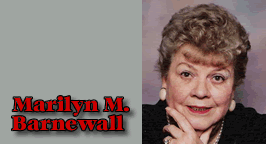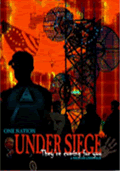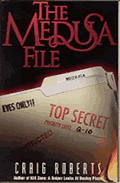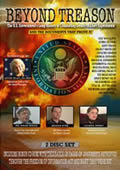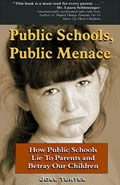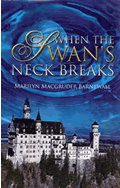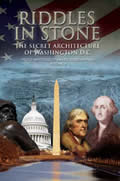By
Marilyn M. Barnewall
July 4, 2009
NewsWithViews.com
“Democracy must be something more than two wolves and a sheep voting on what to have for dinner.” --James Bovard, Civil Libertarian (1994)
When the Declaration of Independence was approved on July 4, 1776, by the Continental Congress and committed 13 colonies to a free, sovereign nation, 2.5 million people lived in the colonies.
If that doesn’t give you a strong sense of yearning for the past, nothing will. Only about one in ten of us enjoy a 4th of July parade, these days. Another tenth of us choose July 4th as a day to travel. Forty percent of us still watch fireworks displays. Americans apparently prefer to celebrate the 4th by having a cookout or picnic (55 percent).
The last year for which I could find statistics about U.S. imports of fireworks from China is 2005. That year, we imported $211 million. By comparison, we exported $14.9 million (down from $18 million of fireworks exported in 2001 and $17.3 million in 2002). Our biggest customers were Australia ($4.4 million in 2005, Japan $7 million in 2001).
The
popular myth is that the first fireworks were made in China in the 800s
by filling bamboo shoots with gunpowder and exploding them to celebrate
the Chinese New Year. The objective was to scare away evil spirits. The
myth suggests that Marco Polo brought gunpowder to Europe from the Orient.
Other stories suggest fireworks were first developed by India or in one
of the Arab nations. They became popular in Europe during the 1300s. That
would coordinate with when the Crusaders returned to Europe from the Holy
Wars.
In the 1400s, the majority of fireworks were made in Florence, Italy. Henry the VIII took Anne Boleyn as his bride in 1533. A paper-Mache dragon belching fireworks from its eyes and mouth was part of the happy couple's coronation parade. Louis XV of France made extravagant displays of fireworks available at Versailles. Czar of Russia Peter the Great, celebrated the birth of his son with a five-hour fireworks show.
Colored fireworks were first displayed in the 1830s when the Italians began adding trace amounts of metals that burn at high temperature. Calcium, for example, makes colors more intense. Titanium makes sparks. To get blue-colored fireworks, copper salts are used. Gold and white come from aluminum and magnesium (different amounts of each to get each color). Barium salts result in green colors and strontium salts, red. Sodium salts give us yellow.
In 2006, there were 3.4 injuries per 100,000 pounds of imported fireworks, down from 8 injuries per 100,000 pounds in 1997, according to the federal Consumer Product Safety Commission. None of the 11 fireworks-related deaths last year were the result of manufacturing malfunctions, according to commission reports.
Nearly 99 percent of all fireworks sold legally in the United States are imported from China, according to the American Pyrotechnics Association, a trade group. Since they began to flood the U.S. market more than 20 years ago, these inherently hazardous imports have been aggressively regulated in a way that other Chinese-made goods often are not.
When Chinese-made fireworks flooded the market in the late-'80s, they presented the same quality-control issues other industries have faced. According to the laboratory, 75 percent of Chinese fireworks failed to meet minimum government standards.
Also according to the American Pyrotechnics Association, regulation and enforcement of safety standards for fireworks have evolved over time in a way that controls on Chinese food and drug imports have not. The industry created the standards laboratory, which has a team of about 50 people in China who oversee production of 75 percent of the fireworks exported to the United States.
In 2005, we imported $5.5 million of American flags -- $5 million came from China. This is down from $29.7 million worth of American flags made in China in 2001. According the U.S. Census Bureau, $349 million of annual shipments of fabricated flags, banners and similar emblems by American manufacturers were made in 2002. That’s the latest date available.
As with most American holidays, food plays an important role in celebrating the birth of our nation. It is hard to nail down how many millions of people attend a picnic or a barbeque. To one person, eating a hamburger, corn on the cob and potato salad is a barbecue. To someone else, it’s a picnic.
It appears,
however, that millions and millions of us attended one or the other. Those
who ate hamburgers may be interested to know that Texas produced 7.3 billion
pounds of beef in 2005.
Texas accounts for over one-sixth of the nation’s total production.
If your beef hot dog or hamburger didn’t come from Texas, it probably
came from Nebraska (4.5 billion pounds), or Kansas (4 billion pounds).
The number of hot dogs of all varieties expected to be consumed by hungry Americans is 150 million (or about one hot dog per two Americans). According to the National Hot Dog and Sausage Council, more than one-in-four of the 150 million hot dogs probably originated in Iowa – especially if the hot dog is pork. The Hawkeye State had 15.2 market hogs and pigs as of March 1, 2006. North Carolina has 8.5 million; Minnesota has 5.8 million hogs and pigs. For those who ate ribs, that tells you where your dinner was most likely raised, too.
The name “hot dog” is credited to a sportswriter. He listened to venders calling out “get your hot Dachshund dog sandwiches here,” at the ballpark and shortened the words in his column the next day to “hot dogs.” According to people who study such things, the proper accoutrement for hot dogs is mustard and you should always apply it to the dog, not the bun.
As for your barbecued chicken, between December 2004 and November 2005, Georgia, Arkansas, Alabama, North Carolina, Mississippi and Texas produced more than $1 billion of chicken products – more than half of the nation's broiler production.
Did you know that about 75 percent of the lettuce we eat is grown in California? Or that Florida and California produce about 66 percent of our tomatoes? As for those baked beans to which secret recipes containing different amount of pineapple, brown sugar and other delicacies, North Dakota, Michigan and Nebraska produce 60 percent our dry, edible beans.
In 2005, one-half of the potatoes for salad and chips came from Idaho and Washington, and watermelon gets to us via California, Florida, Georgia, Texas and Arizona.
There are numerous ways in which Americans use patriotic words. According to the U.S. Census Bureau:
Thirty-two places are named “eagle” — after the majestic bird that serves as our national symbol. (Places include cities, towns, villages and census-designated places.) The most populous such place is Eagle Pass, Texas, with 24,847 residents. There is also Eagle County, Colo., with a population of 47,530.
Eleven places have “independence” in their name. The most populous of these is Independence, Mo., with 111,023 residents. Didn’t a guy named Harry Truman live there?
Five places adopted the name “freedom.” Freedom, Calif., with 6,000 residents, has the largest population among these.
There is one place named “patriot” — Patriot, Ind., with a population of 195.
And what could be more fitting than spending the Fourth of July in a place called “America”? There are five such places in the country, with the most populous being American Fork, Utah, population 22,387.
The fourth of July represents happy days of childhood summers to me. It was a family day.
|
Subscribe to the NewsWithViews Daily News Alerts! |
I remember taking my kids one year to a parade the morning of the 4th, then catching the train from Denver to Cheyenne roundtrip, picking up the car at Union Station when we returned, and driving to Colorado University’s Folsom Field in Boulder for a fireworks celebration (where we ate hot dogs and hamburgers). At that point in time, my kids had never been on a train and the railway joining of East to West seemed a good way to celebrate our nation's history.
People like me skew the statistics.
� 2009 Marilyn M. Barnewall - All Rights Reserved
Sign Up For Free E-Mail Alerts
Marilyn Barnewall received her graduate degree in Banking from the University of Colorado Graduate School of Business in 1978. She created the first wealth creation (credit-driven) private bank in America in the 1970s. Prior to her 21-year banking career, she was a newspaper reporter, advertising copywriter, public relations director, magazine editor, assistant to the publisher, singer, dog trainer, and an insurance salesperson and manager.
She was named one of America's top 100 businesswomen in the book, What It Takes (Dolphin/Doubleday; Gardenswartz and Roe) and was one of the founders of the Committee of 200, the official organization of America's top 200 businesswomen. She can be found in Who's Who in America (2005-08), Who's Who of American Women (2006-08), Who's Who in Finance and Business (2006-08), and Who's Who in the World (2008).
Web site:
E-Mail: marilynmacg@juno.com

